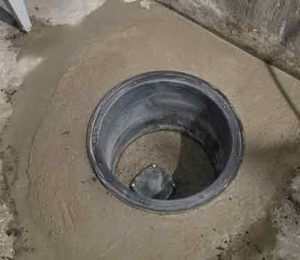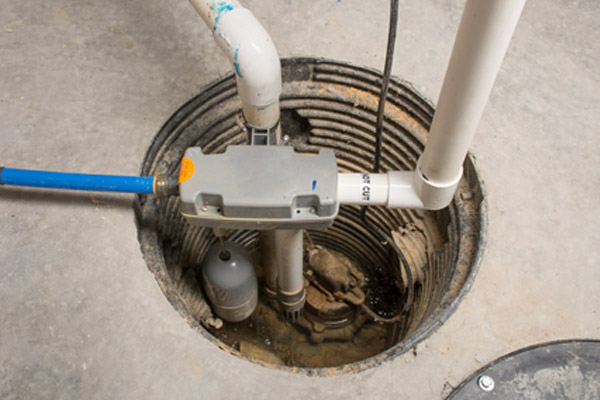Useful Techniques for Maintaining Your Sump Pump
Useful Techniques for Maintaining Your Sump Pump
Blog Article
The author is making several great observations on How To Effectively Clean A Sump Pump as a whole in this content down below.

Sump pumps are essential elements in lots of homes, particularly in locations vulnerable to flooding or extreme wetness. They help protect against water damages by efficiently eliminating excess water from basements or crawl spaces. Nonetheless, like any other appliance, sump pumps need regular maintenance to ensure they operate successfully when required one of the most. Cleaning your sump pump is an essential part of its upkeep, and recognizing just how to do it correctly can save you from expensive repair services and prospective catastrophes.
Intro
Maintaining a clean sump pump is vital for its appropriate functioning and durability. Overlooking this essential task can cause blockages, breakdowns, and eventually, water damages to your property. Therefore, finding out how to clean a sump pump is essential for home owners that depend on these tools to keep their basements completely dry and safeguarded.
Indications of a Dirty Sump Pump
Knowing when your sump pump needs cleansing is essential for avoiding possible breakdowns. Some typical signs that show a filthy sump pump include unusual noises during operation, reduced water circulation, and visible debris in the pit. If you see any one of these signs and symptoms, it's vital to cleanse your sump pump promptly to avoid any kind of more concerns.
Planning for Cleansing
Prior to you start cleaning your sump pump, it's vital to take some safety and security preventative measures. Start by shutting off the power to the pump to stay clear of any type of electric mishaps. Additionally, use suitable protective equipment, such as handwear covers and goggles, to shield yourself from dirt, debris, and prospective pathogens.
Comprehending the Sump Pump
Before diving into the cleansing process, it's important to have a standard understanding of how a sump pump works. Normally set up in a pit or container below the basement floor, a sump pump consists of a number of vital parts, consisting of a pump, a float switch, and a discharge pipe. When water gathers in the pit, the float switch triggers the pump, which after that pumps the water out through the discharge pipe, far from the building's foundation.
Step-by-step Guide to Cleansing a Sump Pump
Shutting Off the Power
Begin by separating the power supply to the sump pump to prevent any kind of mishaps while cleaning.
Checking for Correct Performance
Before re-installing the pump, carry out a fast examination to ensure that the float button triggers the pump appropriately. Put some water right into the sump pit and observe the pump's procedure. If everything is working properly, you can reconstruct the pump and reconnect the power supply.
Eliminating Debris and Dust
Utilize a container or a scoop to eliminate any kind of visible particles, dust, or debris from the sump pit. Dispose of the debris appropriately to avoid it from clogging the pump or the discharge pipeline.
Cleansing the Pump and Drift Switch Over
As soon as the pit is free from debris, thoroughly remove the pump from the pit. Examine the pump and the float button for any indicators of damages or wear. Utilize a soft brush or fabric to cleanse the surfaces and eliminate any kind of built up crud.
Purging the System
After cleansing the pump and float button, purge the sump pit with clean water to remove any type of continuing to be dust or sediment. This will help guarantee that the pump operates efficiently and successfully.
Upkeep Tips to Maintain Your Sump Pump Clean
In addition to routine cleaning, there are several upkeep pointers you can follow to maintain your sump pump in ideal problem:
Conclusion
Cleaning your sump pump is an essential element of its maintenance and makes sure that it runs properly when you need it one of the most. By following the actions detailed in this overview and incorporating regular maintenance right into your routine, you can expand the life expectancy of your sump pump and safeguard your home from water damages.
6 STEPS ON HOW TO CLEAN A SUMP PUMP PROPERLY
UNDERSTANDING SUMP PUMPS
Your sump pump plays a crucial role in protecting your home by managing and removing excess water. It primarily functions as a “shield”, guarding your basement against the damaging effects of water accumulation. The pump is housed in a sump pit in the lowest part of your basement, and its job is to pump out any water that collects there.
During heavy rainfalls or when snow melts rapidly, water can infiltrate your basement, posing potential risks like flooding, structural damage, and harmful mold growth. Here, the sump pump springs into action, pumping out the intruding water and directing it away from your home.
SAFETY FIRST
Before cleaning, remember to prioritize safety. Disconnect the sump pump from the power source to prevent any accidental electric shocks. Also, wear sturdy gloves to protect your hands from any sharp or dirty components within the pump.
REMOVE THE SUMP PUMP
After ensuring your safety, the next step is to remove the sump pump from its pit. Doing this might require careful maneuvering as you don’t want to damage any pump components. Once removed, clean the sump pit to remove any accumulated debris or sludge.
INSPECT THE PUMP
Inspect the pump for any visible signs of wear or damage. Check the power cord, float switch, and impeller housing. If any components look worn out or damaged, consider replacing them to ensure optimal performance.
CLEAN THE PUMP
Thoroughly clean the pump with warm, soapy water. Make sure to rid it of any dirt, gravel, or other debris that might impede its performance. You can use a toothbrush to clean the small, hard-to-reach parts of the pump.
REINSTALL THE SUMP PUMP
Reinstall the pump into the sump pit Make sure it’s positioned correctly to remove the water effectively Once it’s back in place, reconnect it to the power source TEST THE PUMP
Finally, pour some water into the pit to ensure the pump works correctly. It should start automatically and begin pumping out the water; if it doesn’t, check the power source and the positioning of the pump.
Remember, while cleaning your sump pump is an essential part of home maintenance, hiring a professional plumber for a thorough inspection and cleaning at least once a year is also important. This will ensure that your pump is in optimal condition, ready to protect your home from potential water damage.
BEST PRACTICES FOR CLEANING SUMP PUMP DISCHARGE PIPES
Regular Inspection: Regularly inspect your discharge pipes, especially during heavy rainfall or snowmelt periods. Look for any signs of blockage or damage. Early detection of problems can prevent serious issues down the line. Periodic Cleaning: Over time, sediment and debris can accumulate in the discharge pipes, impeding the flow of water. Regular cleaning helps keep the pipes clear and functioning efficiently. You can use a high-pressure water jet to effectively clean the pipes. Insulation During Winter: In colder climates, discharge pipes can freeze, blocking the outflow of water. Protect your discharge pipes from freezing temperatures by insulating them with foam pipe insulation. This will ensure the sump pump can continue to discharge water even in freezing conditions. Proper Positioning: The discharge pipe should be positioned to direct water away from your home’s foundation. Improper positioning can lead to water seeping back into the basement. Ensure the pipe is long enough and angled correctly. Installation of a Check Valve: A check valve prevents water from flowing back into your sump pit after the pump has pushed it out. Installing a check valve helps maintain the efficiency of your sump pump and reduces the risk of flooding. Minimize Pipe Turns: Every curve or turn in the discharge pipe can decrease the efficiency of water flow. By minimizing turns and bends in your discharge pipe, you can increase the efficiency of your sump pump. https://www.fullspeedplumbing.com/how-to-clean-a-sump-pump-properly9999/

Hopefully you liked our part on Steps to Cleaning Your Sump Pump Properly. Many thanks for finding the time to read our post. In case you enjoyed reading our blog posting kindly don't forget to pass it around. Thanks for your time spent reading it.
Click Here Report this page